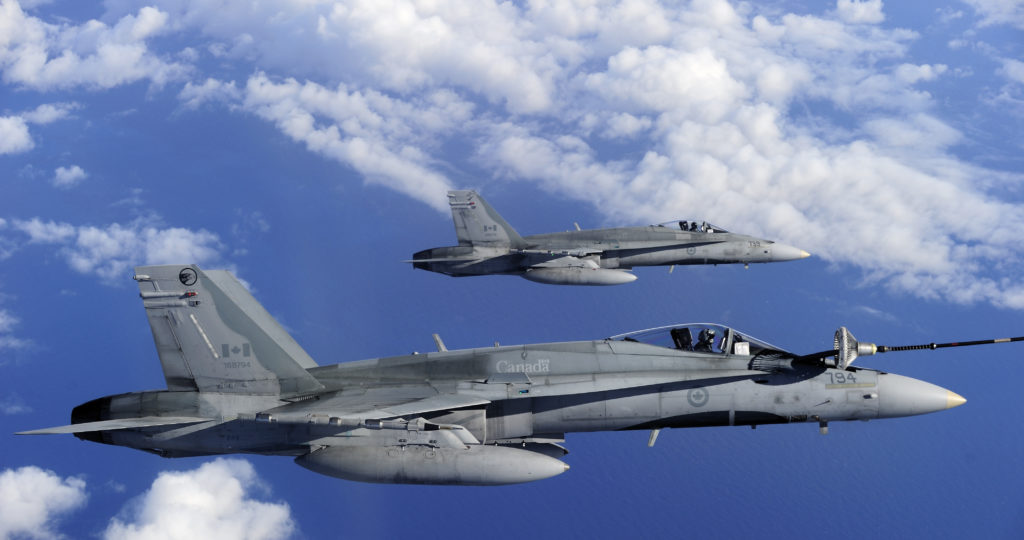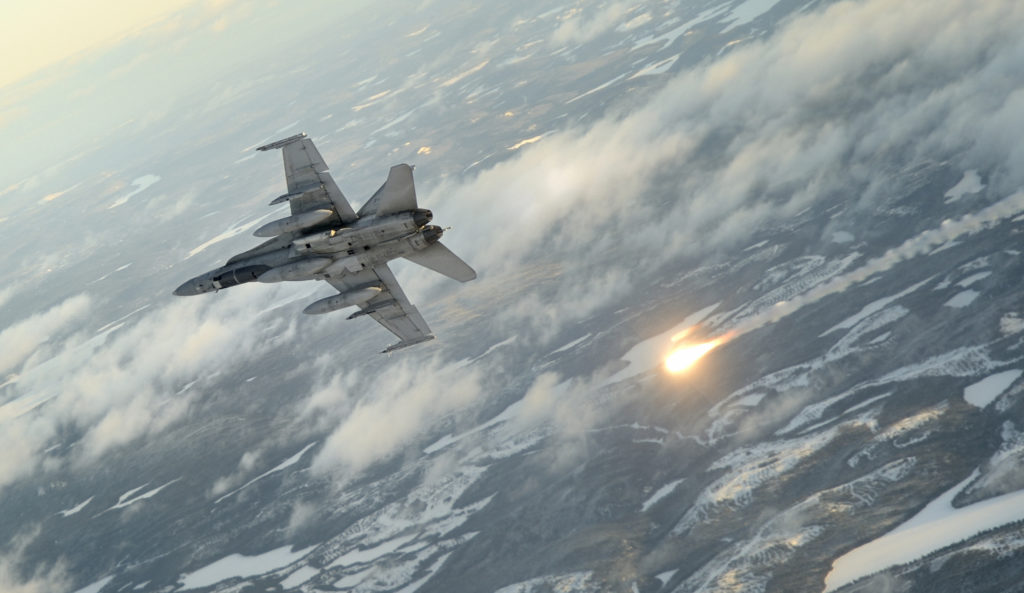Estimated reading time 5 minutes, 54 seconds.
The Canadian government is still a year away from issuing a request for proposals for its next fighter jet, but the general leading the future fighter capability project has indicated what capabilities may drive the Royal Canadian Air Force’s (RCAF’s) eventual statement of requirements.

In a presentation to the Aerospace Innovation Forum in Montreal last week, MGen Alain Pelletier, chief of the Fighter Capability Program, emphasized the importance of a platform with the flexibility to adapt to changing threats over a period of at least 30 years.
Setting the future fleet of 88 jets in the context of NATO and NORAD missions, he emphasized the challenge of anticipating, adapting and acting in a threat environment where potential adversaries are investing heavily in longer-range “anti-access/area denial” capabilities, surface-to-air missile systems, exploitation of the electro-magnetic spectrum, and cyber weapons.
Pelletier, a CF-188 Hornet pilot with two tours in the Balkans, noted the “operational disadvantage” Canadian pilots currently face from anti-aircraft and surface-to-air threats. In recent NATO air policing missions over Romania and Lithuania, “we fly to a potential threat area knowing that our location and number is known by the adversaries while the intent and willingness…to employ their weapon systems remains unknown,” he said.
This was especially true during the CF-188 deployment on Operation Impact over Iraq and Syria. Though the theatre was considered a semi-permissive environment, “had the Syrian government intent changed regarding the use of their airspace, only effective self-protection systems and exploitation of the electro-magnetic spectrums could have protected our fighters against a 20 second engagement by a surface-to-air missile,” he observed.

Cpl Pierre Habib Photo
The current NATO environment features a range of advanced surface-to-air systems that “are mobile, digitized, passive, and carry missiles with a cruise speed capability and a classified range in excess of 300 kilometres,” he said.
A sortie might begin in a permissive environment but end in a contested one, so the “capabilities of the aircraft at the beginning of the mission [will] define if the future fighter will have an operational advantage.”
The NORAD picture is equally challenging. Russian activity in the North has increased in the past several years, Pelletier noted, “with Russian bombers potentially armed with low observable cruise missiles being escorted by fighters…like the advanced [Sukhoi] Su-35 and eventually the Su-57 [first seen] in the Syrian theatre of operations.”
“Exploitation of the electro-magnetic spectrum allows Russian platforms to know where Canadian NORAD fighters are,” limiting Canadian options to respond, he added. “The bottom line remains that the defence of Canada and North America requires a future fighter that can adapt and act decisively.”
Consequently, a critical requirement of the next fighter jet will be interoperability with NORAD and NATO partners. In particular, Pelletier underscored the importance of being able to share intelligence among 2 Eyes and 5 Eyes partners collected by their respective national assets.
The 2 Eyes partnership of Canada and the United States, and the 5 Eyes group of Canada, Australia, New Zealand, the United Kingdom, and the U.S., has been essential to understanding and operating in conflict zones.
He also emphasized that operations are heavily dependent on the systematic collection, coordination, fusion, production and dissemination of defence intelligence.
“In a fighter aircraft, all systems employ or exploit this information for the use of mission data files, threat libraries, all of which allow the pilots to effectively conduct their mission. Commonality and a growth path are required to ensure the seamless fusion of all systems through the life of the fleet to 2060 and beyond.”
NATO and NORAD systems and intelligence interoperability requirements are not new, but the RCAF’s demand for 2 Eyes/5 Eyes compatibility could present a barrier for countries and manufacturers that are not part of those closed groups.
Several times during his presentation, Pelletier also repeated the need for an aircraft and mission and weapons systems that could be “continuously” upgraded well into the 2060s.
Given the innovation forum’s focus on disruptive technologies, Pelletier noted the opportunities and threats posed by autonomous systems operating in an integrated and networked fashion, swarming unmanned systems, advanced exploitation of the electro-magnetic spectrum, hypersonic speed, directed energy, quantum technology, and artificial intelligence.
All may eventually be part of the next fighter, but he cautioned industry that any advantage would only happen if the technology could be rapidly implemented and integrated and supported by government policy and rules of engagement.









It would seem to me that the RCAF is pointed directly at the F-35 which was the original choice by the PC government and cancelled with great fanfare by the Liberals. The article says that the RCAF choice would be heavily dependent on the requirements of 2/5 eyes compatibility – “demand for 2 Eyes/5 Eyes compatibility could present a barrier for countries and manufacturers that are not part of those closed groups”. That eliminates the French Mirage, the Eurofighter, and Saab, leaving the U.K. and U.S. manufacturers only. As the U.K. is no where near ready to design and deliver a 5th generation aircraft, that narrows it down to the F-35 from Lockheed or the Super Hornet from Boeing and it’s highly unlikely the latter is a contender. Also the Super Hornet isn’t going to be adaptable and up-gradable for future requirements as stated by the RCAF, notwithstanding the relationship with Boeing.
MGen Alain Pelletier’s goals would seem to be easily achieved. Build new SAAB Gripen fighters in Canada to meet Canadian needs, Then.develop home grown technologies for future upgrades resulting in a Canadian version of the Gripen with Canadian technology fully operable with two-eyes and five-eyes allies. Canada has the engineers, scientists, technology and skills necessary,
we need these’s SAAB Gripen fighters